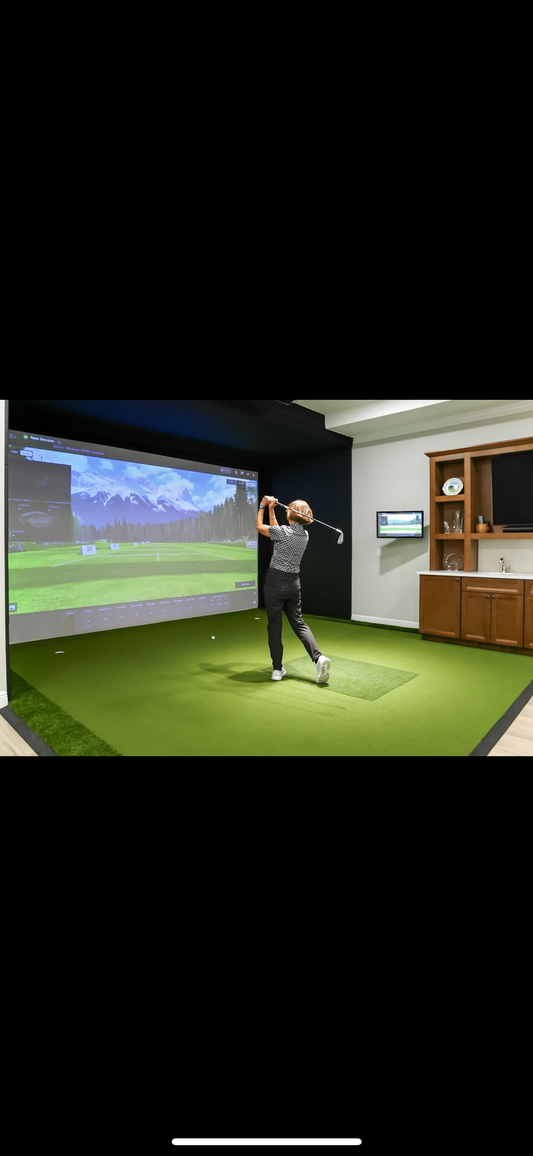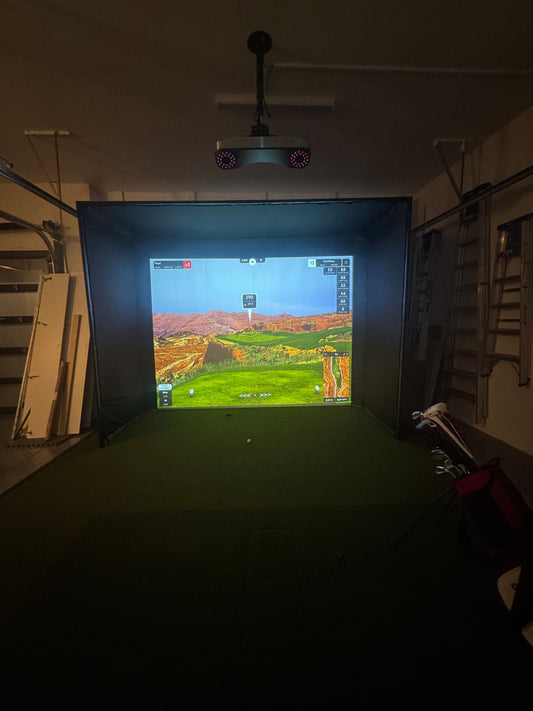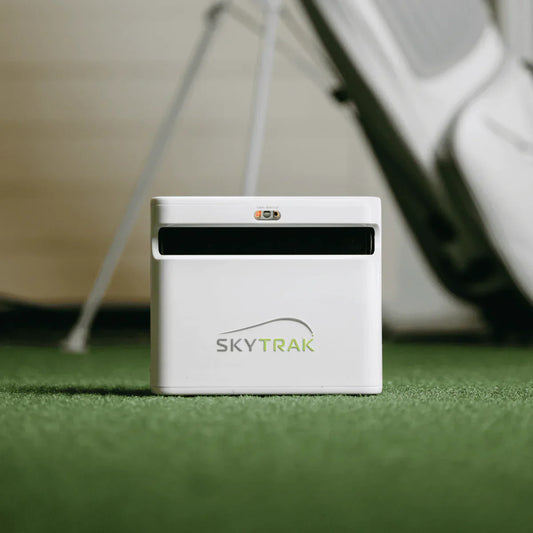
The Cost of Golf Simulators: What to Expect at Every Budget Level
Golf simulators can range from modest setups you assemble in a garage, to high-end commercial bays used by pros and clubs. How much one costs depends heavily on what level of realism, data, and immersion you want. Below is a comprehensive guide to what you’ll spend for entry-level, mid-range, and premium golf simulator setups, including costs for the key components: launch monitors, screens/enclosures, mats, projectors/displays, software, and installation. I'll also cover what drives up prices and how to get the most bang for your buck.
Key Components That Drive Simulator Cost
Before seeing the totals, it helps to understand the parts that typically add up:
-
Launch monitor / tracking system — the device that measures ball flight, spin, club data, etc. Big cost driver.
-
Impact screen / Enclosure / Net / Side barriers — material and structure to safely catch the ball and display visuals.
-
Hitting mat / Turf — the surface you hit from; better mats cost more but affect feel and durability.
-
Projector or Display / Monitor — essential for visuals; depends on size, throw distance, resolution, brightness.
-
Software & Subscriptions — simulator software, game/course libraries, updates, possibly membership fees.
-
Space & Build / Installation — room construction, lighting control, ceiling height, flooring, safety.
Costs swing significantly depending on quality, accuracy, features, and whether you do a DIY build or buy a pre-built system.
Cost Tiers: What You’ll Pay at Different Levels
Here’s a breakdown of typical setups by budget level, what you get, and real examples.
|
Tier |
Total Cost Approximate |
What's Included / What You Get |
Typical Use / Who It’s For |
|
Entry-Level |
$5,000 - $10,000 |
Basic launch monitor or sensor, a net or basic screen, basic mat, minimal software or course library, possibly using a TV or PC monitor instead of projector. |
Beginners, casual golfers, people wanting to try out simulator golf without huge investment. |
|
Mid-Range |
$10,000 - $20,000 |
True launch monitors with more accuracy (ball speed, spin, launch angle, sometimes club data), higher quality impact screen/enclosure, good mat/turf, decent projector/display, full simulator software with more courses, better visuals. |
Avid golfers wanting more realistic data and immersive practice; dedicated simulator rooms. |
|
Premium / Pro / Commercial |
$20,000 - $50,000+ |
Top-tier launch monitors (pro-grade radar / photometric), large and high-quality enclosures/screens, premium mat, 4K or ultra short throw projectors, advanced software, possibly climate control, high-end installation. |
Teaching pros, club fitters, commercial golfers, or those who want near tournament-level precision and experience. |
Detailed Pricing by Component
Here are more specific numbers to help you budget, based on recent examples:
Launch Monitors / Tracking Systems
-
Low-cost / beginner: units like the Garmin R10 (~$499-$600) offer ball flight metrics and virtual courses for casual use. GolfLink+2Golfaro+2
-
Budget photometric / mid-range: devices like the Rapsodo MLM2Pro (~$699) or FlightScope Mevo+ (~$1,800-$2,200 depending on package) deliver better ball flight accuracy, spin, etc. Par Precision+3Golf Easer+3GolfLink+3
-
High-end launch monitors: SkyTrak+ (~$2,495) in a higher tier; then pro level monitors like Foresight’s GC2, GC3, GCQuad, or TrackMan, which can range from ~$7,000 up to ~$20,000+. Par Precision+3MyGolfSpy+3Topgolf.Club+3
-
Extreme / commercial grade: TrackMan 4 indoor/outdoor versions, or the top photometric systems used in professional fitting bays, often $15,000-$25,000+ just for the launch monitor itself. Par Precision+3Club Up Golf+3Topgolf.Club+3
Screens, Enclosures, Nets & Impact Screens
-
A modest DIY net or basic impact screen: a few hundred dollars. Complete Golf Store+2Reddit+2
-
Mid-quality impact screen plus enclosure/side barriers: $800-$2,000 depending on size and material. Elevated Golf Simulators+1
-
Commercial or premium impact screen/enclosure kits, custom builds: several thousand dollars depending on dimensions, materials, installation.
Mat / Turf / Hitting Surface
-
Basic turf or hitting strip: $150-$500. Golfer Logic+2Complete Golf Store+2
-
TrueStrike or high-end built-in turf systems, or very thick, premium mats: $1,000-$4,000. Golfer Logic+1
Display / Projector / Monitor
-
If using existing TV or computer monitor, cost may be near zero (if already owned).
-
Projector options: Short throw or ultra short throw projectors with high lumens can run $1,000-$3,000+. GOLFJOY+2Golf Swing Systems+2
-
Commercial grade projectors with high resolution, large screen setups cost more.
Software & Subscriptions
-
Some launch monitors include basic software or apps; others require purchase of simulator software or membership.
-
Example: Rapsodo, FlightScope, Bushnell, etc., often have packages or “Pro”/“Gold” subscriptions for advanced features or more courses. MyGolfSpy+2GolfLink+2
-
Fees may be one-time for software or recurring (monthly/annually).
Real Examples & Bundles
To ground this in actual product and bundle prices:
-
GolfLink.com shared examples such as:
Rapsodo MLM2Pro — ~$699 for the device; ~$999 for a basic setup; ~$1,599 for enclosure setups; ~$4,999 for full simulator setups. GolfLink
SkyTrak+ — ~$2,495 (device only); ~$6,795 for full enclosure configuration. GolfLink -
GolferLogic notes that launch monitors run from about $499 (OptiShot-style or club path only) up to ~$14,000 for something like the Foresight GCQuad. Golfer Logic
-
Mid-range example: FlightScope Mevo+ standard packages are ~$1,800-$2,200, with added cost for more premium features. GolfLink+1
-
Premium/pro setups: TrackMan 4 Buy-in, plus enclosure, screen, etc., pushes total well into tens of thousands. Golf Swing Systems+2Topgolf.Club+2
What Raises the Price
Here are the main things that tend to push costs upward:
-
Accuracy and data richness: Measuring spin axis, clubface angle, club path, face impact point, etc., requires more advanced sensors/cameras/radar.
-
Room / space requirements: Need higher ceilings, sufficient depth behind you (especially for radar units), safe bounce-back zones, etc. If you need structural modifications, that’s a cost.
-
Visual realism: Bigger screens, higher resolution projectors, brighter projectors, better enclosures, good lighting control—all cost more.
-
Software / course library and licensing: If you want many virtual courses, realistic graphics, weather, multiplayer or networked options, that often comes with higher subscription or licensing fees.
-
Durability and build quality: Premium mats, premium screens, strong enclosure frames, better projectors—they last longer but cost more up front.
How to Get the Best Value
If you’re planning a golf simulator, here are strategies to manage cost while still getting a solid system:
-
Start with what matters most to you: If accurate ball flight (spin, launch angle) is your priority, spend more on a good launch monitor. If visuals are more important, invest in a good screen/projector.
-
Consider DIY vs “sim-in-a-box” bundles: Some kits bundle enclosure, screen, mat, sometimes even projector, thus potentially saving you overhead.
-
Watch for sales or used gear: Discounts, refurbished monitors, or off-lease equipment can significantly reduce cost. Just verify condition and warranty.
-
Upgrade over time: You might start with a more modest launch monitor and basic screen/mat, then later upgrade projector, software, enclosure.
-
Plan for space early: Ceiling height, room width, lighting—done right, you avoid expensive retrofits.
Sample Budgeted Setup Scenarios
To make this concrete, here are sample scenarios of what you might get for different budgets:
Scenario A: Budget Starter (~$2,000)
-
Launch monitor: Garmin R10 (~$500–$600) or basic Mevo or equivalent.
-
Hitting net / DIY frame + impact screen (basic) (~$300-$800).
-
Basic hitting mat or turf (~$200-$400).
-
Use existing TV or monitor. Possibly basic projector.
-
Entry-level software or free/low-cost apps.
Result: Solid practice and swing data; immersive golf simulator functionality will be limited by the screen size and visual fidelity. Good for casual practice, indoors or covered space.
Scenario B: Mid-Range Core Setup (~$8,000)
-
Launch monitor: SkyTrak or FlightScope Mevo+ with better feature pack.
-
Impact screen + enclosure (side barriers, frame) of mid quality.
-
High-quality mat/turf with good feel.
-
Mid-throw or short-throw projector with moderate lumens.
-
Software with a good course library.
-
Decent PC or device to run it.
Result: A very satisfying indoor golf simulator experience — accurate data, good visuals, realistic feel. Suitable for serious practice or some entertainment/demo.
Scenario C: Premium / Commercial Setup (~$25,000+)
-
High-end launch monitor: TrackMan 4, Foresight GCQuad, or equivalent.
-
Large premium enclosure, large impact screen, custom built if space allows.
-
Premium screen material, premium hitting mat (commercial grade).
-
Ultra short-throw or 4K projector with high lumens; professional grade display/PC.
-
Full simulation software subscription, weather, many virtual courses, maybe multiplayer or networked bays.
-
Installation, lighting, structural work if needed.
Result: Pro-level performance and immersion. This kind of setup is near what a golf professional or commercial facility would use.
Bottom Line: What Should You Budget For?
If you’re reading this and considering building a golf simulator setup, here’s a rough guideline:
-
Minimal viable simulator: $1,000-$2,500
-
Good home simulator: $5,000-$12,000
-
High fidelity / advanced home or semi-commercial: $15,000-$30,000+
Your specific cost will depend on your priorities (accuracy vs immersion vs size), space constraints, and how much you're willing to DIY vs paying for turnkey components.




